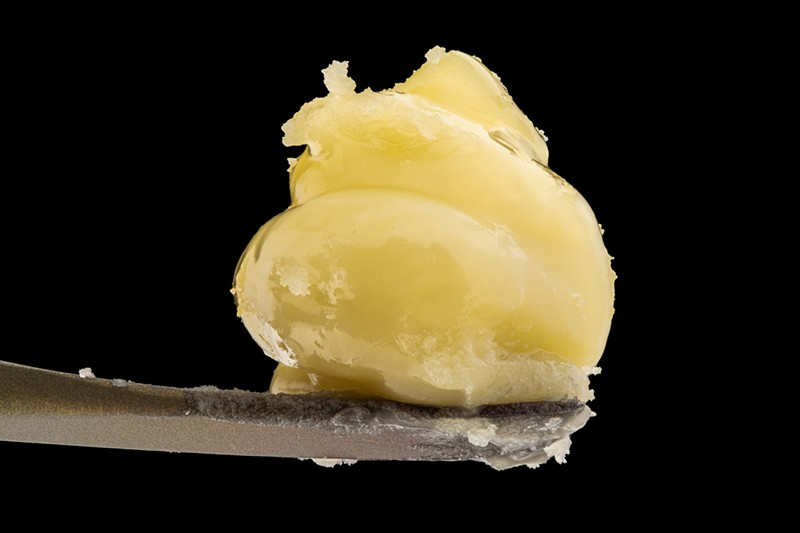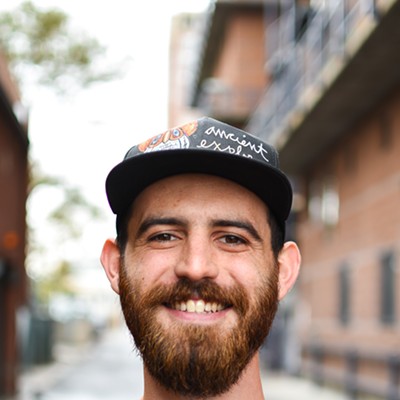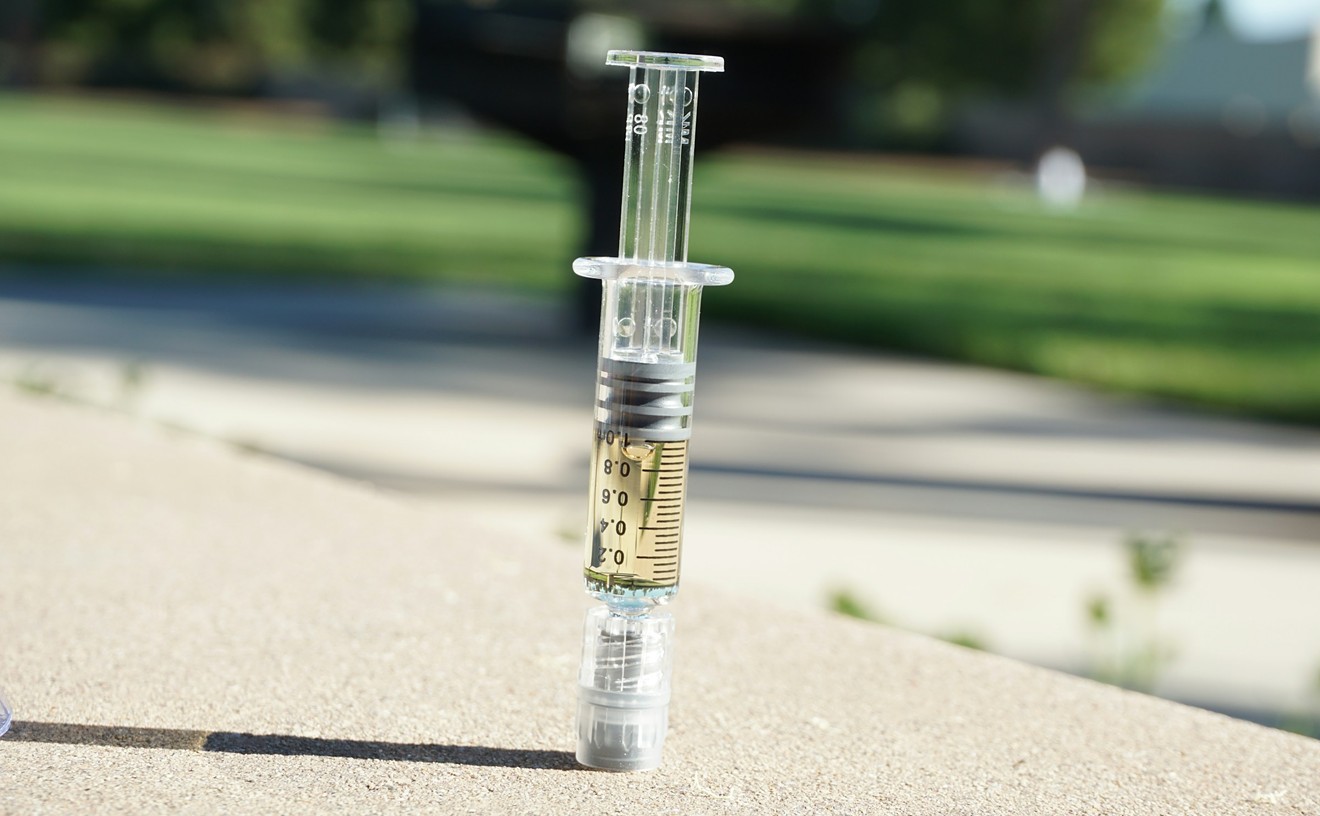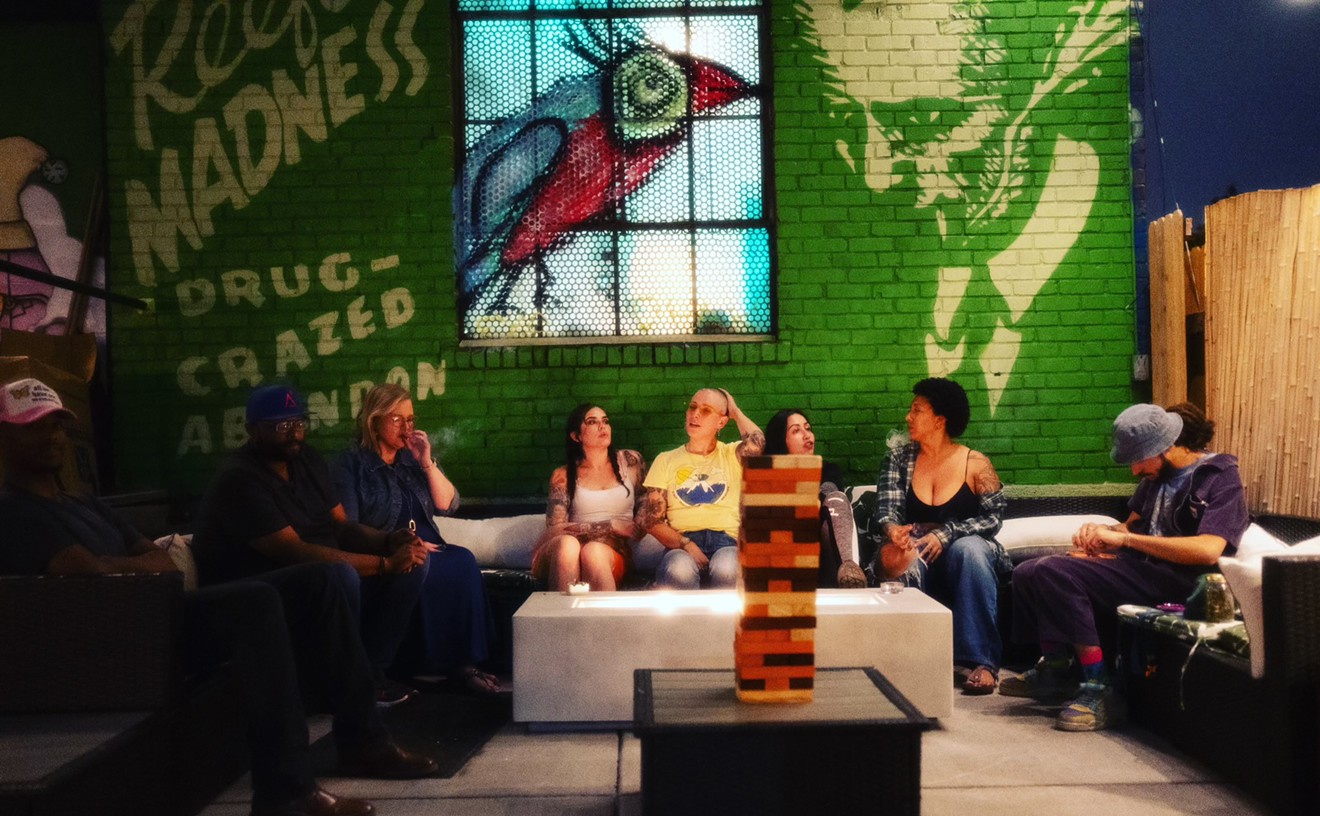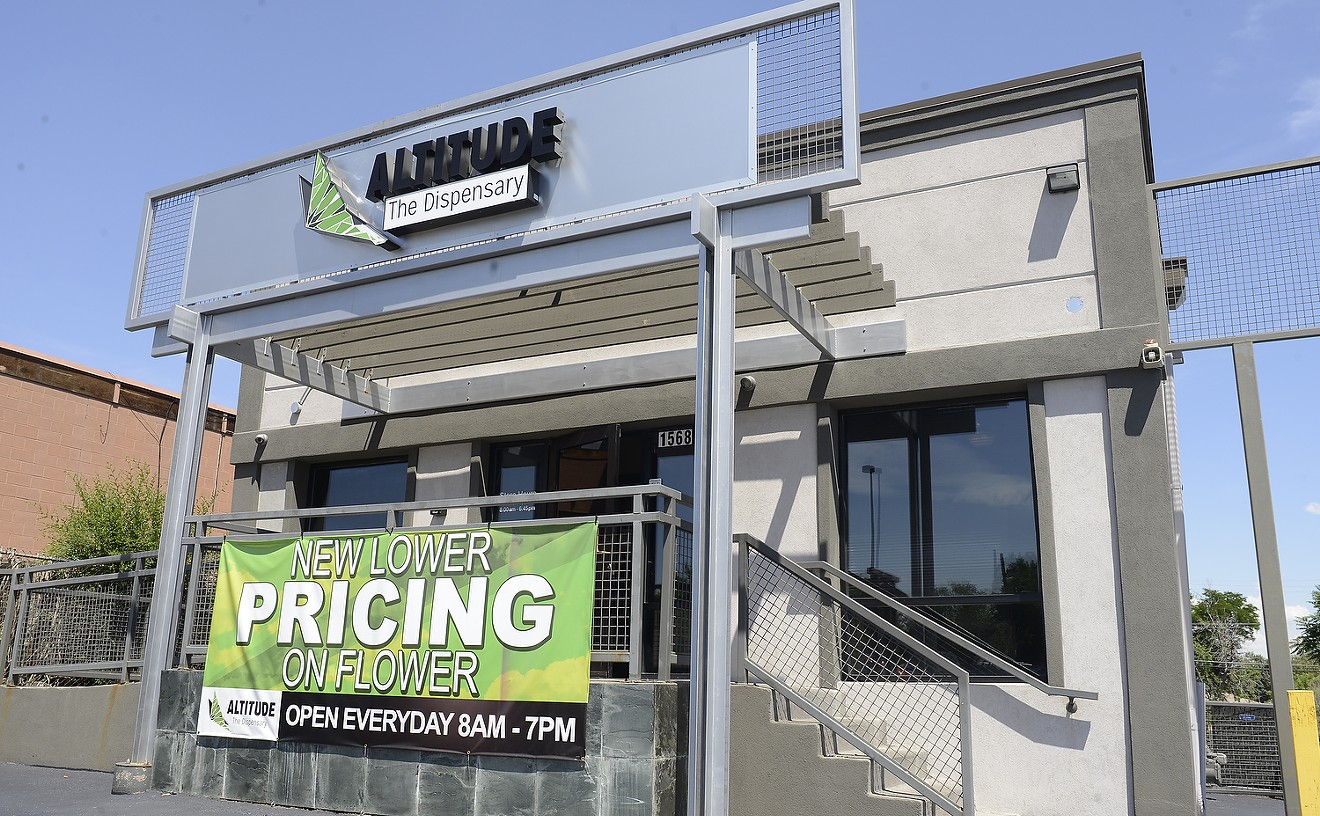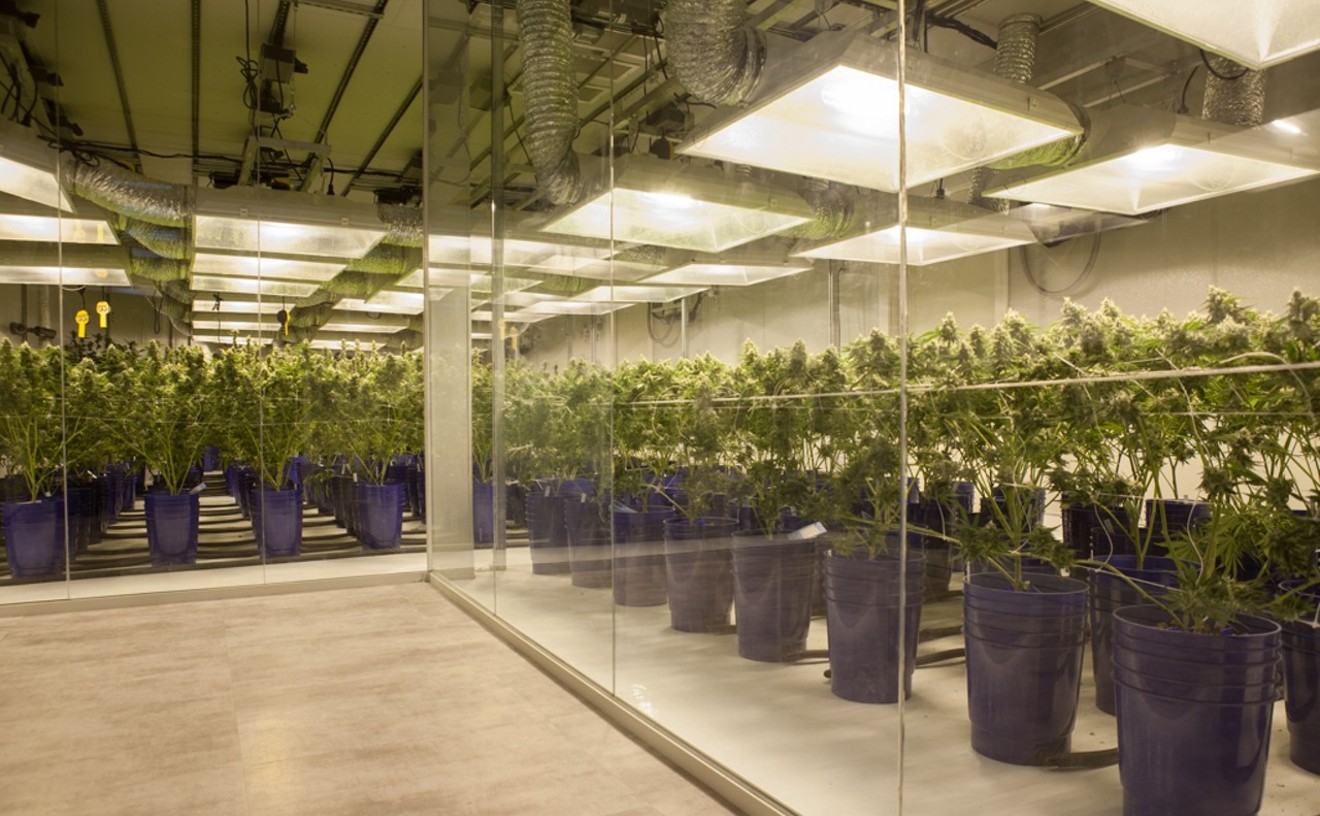Green Dot Labs had a big year in 2021, but co-founder Dave Malone says that was just the beginning. The Boulder-based cannabis company, already an esteemed player in the extraction game, announced itself as one of Colorado's top cultivations, releasing a handful of new strains that floored cannabis connoisseurs. Blue Froot, Copper Chem, Fortissimo, Lemon Butter Rum. You name them, we smoked them — and couldn't get them from anywhere else.
Last year Green Dot also launched a new line of solventless extracts, the Blue Label, designed to showcase the company's purest concentrates. The company plans to add more versions of rosin and a solventless vaporizer cartridge to the Blue Label this year; it's also looking at twelve more strain drops and an expansion into Arizona.
We caught up with Malone, who owns and runs Green Dot Labs with his wife, Alana, to see what's next on the dotted line.
Westword: When we last talked in 2020, rosin was definitely around, but we hadn't seen live rosin, cold-cured rosin and the solventless world take off yet. How has rosin's popularity changed over the last two years?
Dave Malone: The data speaks for itself. If you look at the market, how much that segment has grown year over year, it goes to show you that consumers in the premium market are willing to spend more money for a better extract. And I say “better” very loosely, because it’s how you quantify it, and how you perceive it and all the hype that goes around it. However, seeing that there are this many people willing to spend big on this product shows that this market is here to stay. With the emergence of all the new technologies and automation of the process, and the refinement of making rosin, it's easier to be more commercially viable.
One critical piece about solventless is that there’s a very limited genetic set that goes into it. You look at all the producers around right now, and there’s a lot of redundancy. You see multiple producers making the same stuff, and that’s largely a physiological thing about the plant. The resin structure for certain types of plants are conducive for solventless extraction, but the vast majority are not. So you’re really looking for these diamonds in the rough that can make the process commercially viable. Because we were founded on making a solvent-based extract, we have a tremendous amount of data on market applicability and flavor profiles from that method. When we do solventless extraction, we compare against those numbers, and there’s some pretty glaring data points in there.
The old saying is, "If you’re not using Cookies or Banana strains, you’re washing with tears," because you’re losing money. It’s a very risky process in extracting these wide varieties of flowers, because the yields can be so diminished and you’ve lost so much value. That still continues to be a point for a large portion of solventless producers, that limited variety.
Has rosin's upswing taken some shine away from live resin and other extracts? I never hear about diamonds anymore.
Of course. There’s no doubt a segment of the live-resin market has made an exodus over to rosin. When you look at a timeline of this, at one point we were trying to make solventless hash look like BHO, or a clean shatter. When the first heat press came out, it resembled shatter, and then we took a step further to make it look like a live rosin, sugar, sauce or badder. The flavor profiles were more complex. And for a while we were all trying to make solventless extracts look like BHO extracts, but now you see that solventless extracts aren’t yellow anymore like BHO is. That’s because we’re extracting chlorophyll pigment with solvents, which can bring a yellow appearance. That chlorophyll is biodegradable, so the extracts don’t cure and stay fresh as long because the chlorophyl gets rancid over time. Now we’re trying to make BHO look more like rosin, without that chlorophyl pigment.
As a tastemaker in cannabis, how much of what you do with Green Dot Labs is built upon what you think people will like versus what you like?
Everything we do with genetics and extraction is very self-serving to me. I regard myself as our biggest critic and our ultimate consumer. I have a tremendous amount of experience in the genetics world, and it’s basically everything we do here. I make flavors that impress me, and if I’m impressed by it, other people typically follow. That’s how our playbook has gone.
We’ve created our little genetics bubble here and are finding new unique flavors after sorting through hundreds of hybrids. We’ve refined it all down to seventy plants after looking through thousands. I don’t think many companies have gone to the lengths we have to find these exotic, unique flavors. We try to stay away from the hyped things in the market and have our own breeding program here. We may use other people’s work and tools as inspiration to create new hybrids, but we typically create our own trail there.
What was the motivation behind ramping up the flower releases in 2021, and how hard was it to choose what to grow and when to drop it?
We wanted to start as a flower business. When we first launched Green Dot Labs, we had a dispensary model in mind where we’d primarily sell flowers. Part of our social media strategy is to show the flowers that go into our extract and articulate some of the characteristics of them. If you look at the comment sections, it’s an endless list of people who wanted us to release the flower. The demand has been there forever.
Unfortunately, it takes a lot of maneuvering to add capacity; our extract lines are largely sold out on a continued basis. We didn’t have the capacity to drop flowers, but last year we acquired a 30,000-square-foot facility in Denver and retrofitted and upgraded to our technologically rich cultivation platform. It allows us to produce flower going forward. We always viewed flower as the most prestigious marker in the entire space, because you can hide some flower imperfections in extracts. We have extremely high standards, and if you saw the amount of products that we didn’t release and didn’t meet our standards, your mind might be blown.
The new facility is only on halfway right now as we wait for our plant counts to increase. But we’re on the trajectory to drop anywhere form 40 to 80 pounds of flower per week going forward. That facility gets genetics from our R&D facility in Boulder, where a lot of our genetics are specifically selected for extracts. The flower experience doesn’t quite translate, but a great deal of our genetic library was pre-selected for flower viability, as well.
What are some strains you've particularly enjoyed, and what are you excited to release in the future?
We're into branding strains, and all of our strains are created in-house. We tried to get an understanding of what works in the craft industry, where it's extremely difficult to stand out. You look at New Belgium Brewery, and I remember seeing a red bicycle on Fat Tire when I was in college in Louisiana. Now when I see a red bicycle, I can almost taste Fat Tire in my mouth. That brand equity I have to that beer is crazy. We've started that process here.
We have about sixteen branded strains right now, and another twelve that will be produced over the next year on a month-by-month basis. We're going to be dropping a new branded strain every month with new, unique profiles, an articulation of characteristics, graphics, merchandise and anything else we can come up with. These strains check boxes that a lot of folks don't even know need checking, because we apply a different lens to genetics being an extraction business at first. I would say over the last year, my favorite strain has been Blu Froot. It's one of the most exotic blueberry flavors you'll find in cannabis. We're doing a whole Froot series behind all the different colors, and we're working on a Purple Froot, Yellow Froot and Red Froot, too. The graphics all look sort of alien, because no fruit on earth smells like these.
On the other side, we have the Painter series. In that, we have Picasso, and Dalí is the next one to drop. We also have Garlic Banger, which brings this post-apocalyptic vibe. In that series, we also have Thunderdome and Bio Warfare strains. Those ones are about potency and will really rip your head off. They're vicious strains. Thunderdome is a real standout, barn-burner of a strain.
Do you get more smell and flavor notes from flower or rosin?
Personally, I don’t think anything smells better than well-cured flower. It’s nice to put your nose in a jar of concentrate, but the depth and complexity of well-cured flower, you can get lost in it. It has it all, because you’re not diluting it through the extraction process, where some things do get left behind. If you nail the flower, the extracts will be phenomenal.
We're starting to see popular growers branch into rosin extraction and vice-versa. Is that the logical move for either side? Do flower connoisseurs naturally gravitate toward rosin?
The barriers to entry in solventless extracts are extremely low. The outlay you need to make a compliant facility is relatively inexpensive, so it's easy for flower producers to get into the ever-growing extracts market. There's a total cost-benefit analysis to look at for flower companies looking to enter extraction, and hydrocarbon outfits are extremely expensive and regulated. We kind of started this whole process in the early years and built on it year over year, and it's created a bit of a gap.
Are you still worried about biosynthetic cannabinoids made from yeast? Or have Delta-8 THC and modified cannabinoids taken that lane?
Not yet. I think a lot of the big players are sitting on some technology that they'll deploy in cannabis once federal legalization comes through. With synthetic cannabinoids, there's a whole DEA process associated with that, which is a big factor as to why they're not on the market. But the technology already exists to produce more THC in one hour than the world can produce in a year. It can't be deployed because the feds don't like it, but I do believe you'll see big pharmaceutical companies emerge with these patents.
One day a drop of your blood will be able to map out your endocannabinoid system and show where you're saturated and deficient. They'll be able to make synthetic concoctions of cannabinoids for you, and, theoretically, you'll avoid pathogens, illnesses, cancers or heart disease. It could add more years to human life expectancy.
Colorado's seen new restrictions and warnings added to retail cannabis concentrates, and other states have implemented THC potency caps. How much does that kind of stuff worry you?
It's game over if they do that. It'd absolutely decimate the cannabis industry. I'd fire up my basement grow in a heartbeat if [potency caps] happened. If we're no longer able to produce potent flower or extracts, we have tangible demand in the hundreds of millions of dollars that needs to and will be met. If the cannabis industry turns into a 3.2-beer industry, you'll see demand and tax revenue from legal cannabis fall. I don't think people will see a value in getting diet weed. I think stakeholders and regulators understand that, and what the fallout of a potency cap brings.
Prohibition 2.0 is absolutely gaining momentum coast to coast and speaking their piece, and they're going to be there in the same capacity as they are for tobacco and alcohol. Mothers Against Drunk Driving in the weed world is here, and they're vocal, raising money and organizing more efficiently. They'll be a constant threat to the industry, and in the right markets, they'll get leverage and shut things down. In some established markets with enough data to show we're doing things the right way, we're pretty much okay, but we never sleep easy at night. Things can always change so fast. We have to continue being purveyors of excellence.
[
{
"name": "Air - MediumRectangle - Inline Content - Mobile Display Size",
"component": "12017618",
"insertPoint": "2",
"requiredCountToDisplay": "2"
},{
"name": "Editor Picks",
"component": "17242653",
"insertPoint": "4",
"requiredCountToDisplay": "1"
},{
"name": "Inline Links",
"component": "18838239",
"insertPoint": "8th",
"startingPoint": 8,
"requiredCountToDisplay": "7",
"maxInsertions": 25
},{
"name": "Air - MediumRectangle - Combo - Inline Content",
"component": "17261320",
"insertPoint": "8th",
"startingPoint": 8,
"requiredCountToDisplay": "7",
"maxInsertions": 25
},{
"name": "Inline Links",
"component": "18838239",
"insertPoint": "8th",
"startingPoint": 12,
"requiredCountToDisplay": "11",
"maxInsertions": 25
},{
"name": "Air - Leaderboard Tower - Combo - Inline Content",
"component": "17261321",
"insertPoint": "8th",
"startingPoint": 12,
"requiredCountToDisplay": "11",
"maxInsertions": 25
}
]

